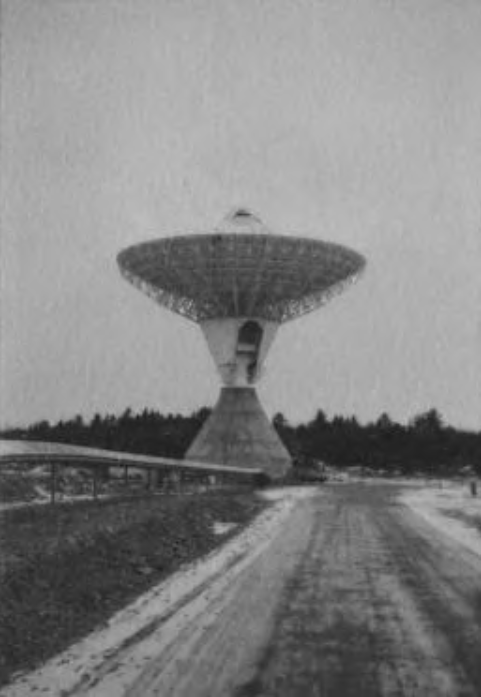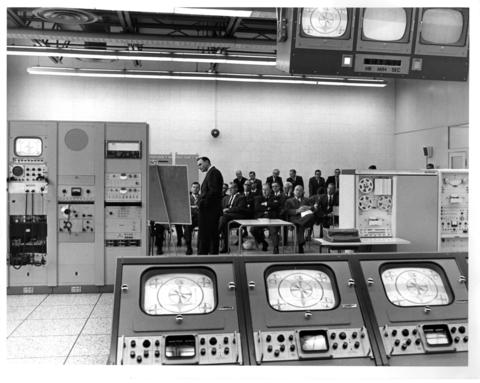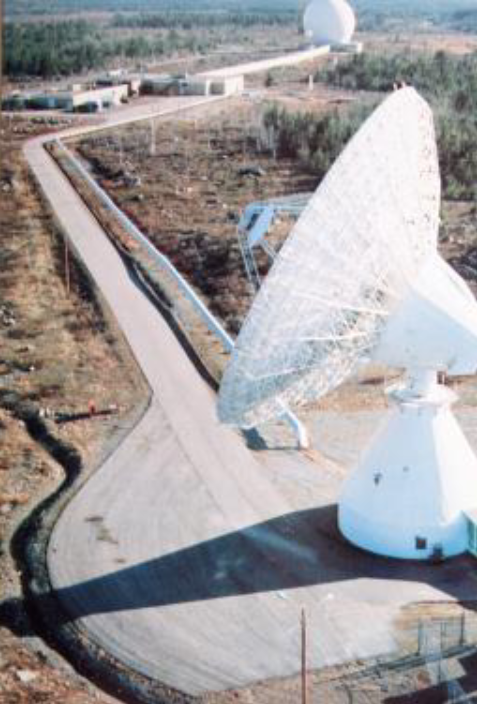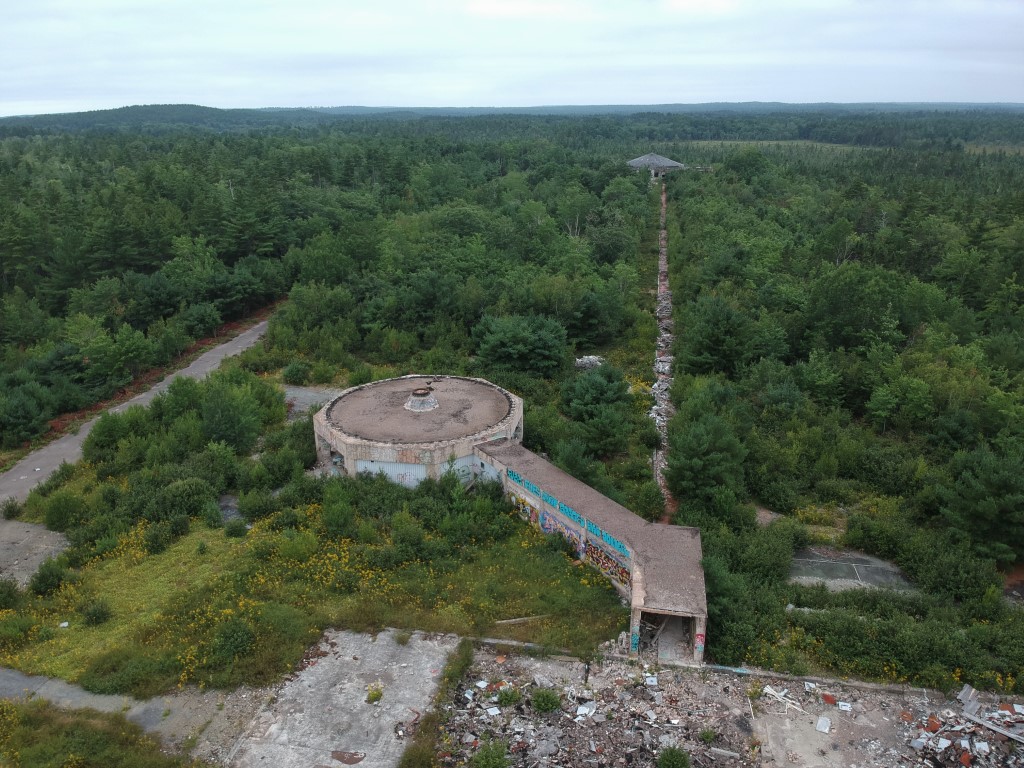Located on a hill near the community of Mill Village is what remains of an important yet largely unrecognized artifact of Canada’s role in international telecommunications. The Teleglobe Satellite Station was built following the launch of some of the first satellites into space and began as an experimental research facility to test the capabilities of satellites as a new form to connect Canada with Europe. Outside of the larger achievements the project would have, it also helped introduce an emerging type of industry in the technological sector. Since this time however the site has fallen into ruin with many of the former buildings and equipment now destroyed or scrapped. Today the site is privately owned, and access is forbidden, but this historic site is believed by many to be something that should have been preserved for the historic significance it holds not just to the people of Nova Scotia, but for its contributions to something we all take for granted today, international telecommunications.

Canada was already at the forefront of international communications even before the first satellites were launched into space. In 1950, the Canadian government established the crown corporation, Canadian Overseas Telecommunications Corporation (COTC), which worked to provide international communications services to Canadians. In 1956, COTC partnered with the United Kingdom and American firms to lay the first multipurpose coaxial submarine cable across the Atlantic Ocean. But at the end of the 1950s, the first satellites were launched into space, opening a new world of potential for communications. In the early 1960s, COTC began representing Canada in collaboration with organizations from across the world to use these satellites to improve global communication networks.
The first part of this was to initially build five satellite stations that could communicate and relay messages to and from satellites. In 1963 one of these stations was constructed near Mill Village, becoming the first of its kind in Canada and only one of two in North America. The site was operational by 1964, just in time to begin receiving and transmitting information from the first commercial communications satellite, Intelsat 1 also known as “Early Bird” launched in April 1965.


The station was built in Mill Village because it offered an isolated location that avoided radio interference and was close to the Halifax and South Western Railway, allowing for easy shipment of the large and sensitive equipment required by the site. The station contained three separate satellite systems that were controlled from operations buildings built on site. The site hired up to 60 people, introducing many to the emerging technological sector. Once in operation, it could communicate with satellites to transmit television and telephone signals between North America and Europe. The site was part of the International Telecommunications Satellite Organization (INTELSAT), an international collaboration to own and operate satellite-based communications systems.
The stationed remained an important component of the global system responsible for receiving and transmitting many of the significant televised moments to the people of Canada. In 1975, the COTC changed its name to Teleglobe Canada and in 1982, received major upgrades to allow it to communicate with newer satellites. But while the station remained important into the mid-1980s, in 1984 Teleglobe Canada became one of many crown corporations that were privatized to save governmental spending. The station was purchased by Montreal-based firm, Memotec Data Incorporated (MDI) however retained the name Teleglobe Canada. There was great doubt about whether the corporation could continue the important work being completed at Mill Village, with the CBC and CRTC expressing great concern over the purchase. This was not unwarranted however when in 1993 the company underwent internal restricting and changes to the company’s focus causing the station to be shut down. It remained in the hands of the company for several more years when in 1997 it was officially abandoned.


Today
For years later the site became a popular spot amongst locals and for a period was perhaps one of Nova Scotia’s most popular exploring sites. However, in the last year or two, new owners have restricted all access to the historic site, placing fences and cameras throughout the area. Because of this, the site is no longer accessible.



The former Teleglobe Satellite Station continues to represent a forgotten piece of Nova Scotia’s contributions to developing global communications networks, a system that we now take for granted. While the station today is in ruins and is slowly being demolished, it remains one of Nova Scotia’s most hidden technological wonders.
Sources
Maritime Telegraph and Telephone Company Limited (1964) – Found here & here.
Barkwith, J. (2018). A Record of Some of the More Notable Satcom Projects 1963 to 1997. Found here.

